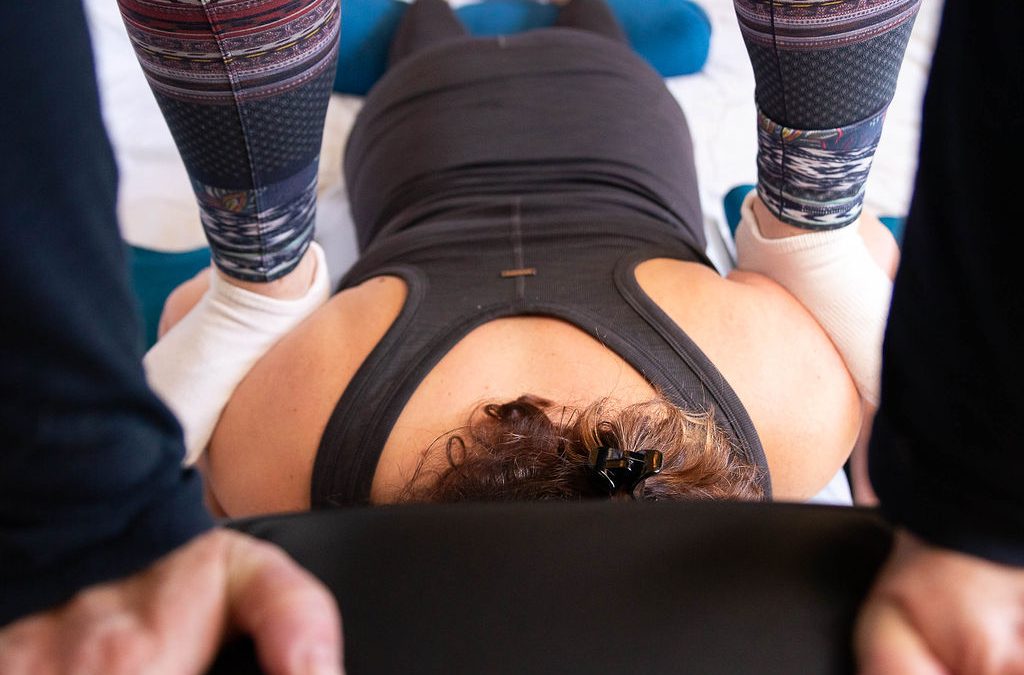Infinity’s exercises for neck and shoulder pain are not the same as the ones you get at a physical therapist’s office. Each exercise corresponds to a Traditional Chinese medicine meridian because each meridian runs through a unique group of muscles.
The location of your pain can reveal a lot about the imbalances in your meridians and help Infinity determine where to begin your training. Interestingly enough, the lower body can cause pain in the upper body, but more on that later!
Neck and shoulder pain is a common issue at Infinity. People who have a computer job and sit for long hours are more likely to develop neck and shoulder pain. Stress, poor posture, and hours hunched over a cell phone will also cause pain in the upper body.
Poor posture allows gravity to pull your upper body out of alignment. This overstretches the muscles in the upper back and neck, while the muscles in the chest contract and tighten. Over time, the imbalance in the muscles causes dysfunction, pain, and a lack of mobility.
Infinity’s rule of thumb is – for every hour spent with poor posture, you need at least one hour of stress and tension relief. Strength and flexibility training helps relieve tension by working the opposing and balancing muscle groups to restore optimal movement, range, and strength.
In this article, we walk you through 10 meridian exercises for neck and shoulder pain that you can do from the comfort of your own home!
10 Meridian Exercises for Neck and Shoulder Pain
Infinity Flexibility Integrative Bodywork has several exercises for neck and shoulder pain that improve mobility, strength, and flexibility. The following list includes self-stretching exercises for the eight upper-body meridians and two lower-body meridians.
It may be counterintuitive to stretch the lower body for upper pain dysfunction. But the two lower body meridian exercises in this article are essential for pelvic alignment. The tilt of your pelvis influences posture and proper shoulder positioning. A tucked pelvis can lead to hunched shoulders and cause shoulder pain.
The eight upper body meridian exercises target all of the muscles in the upper body, including the delts, traps, pecs, and biceps!
Start with one set per meridian. Work up to three sets of 8 to 12 repetitions on each exercise as you increase strength and flexibility!
Upper Body Meridian Exercises
1. Spleen
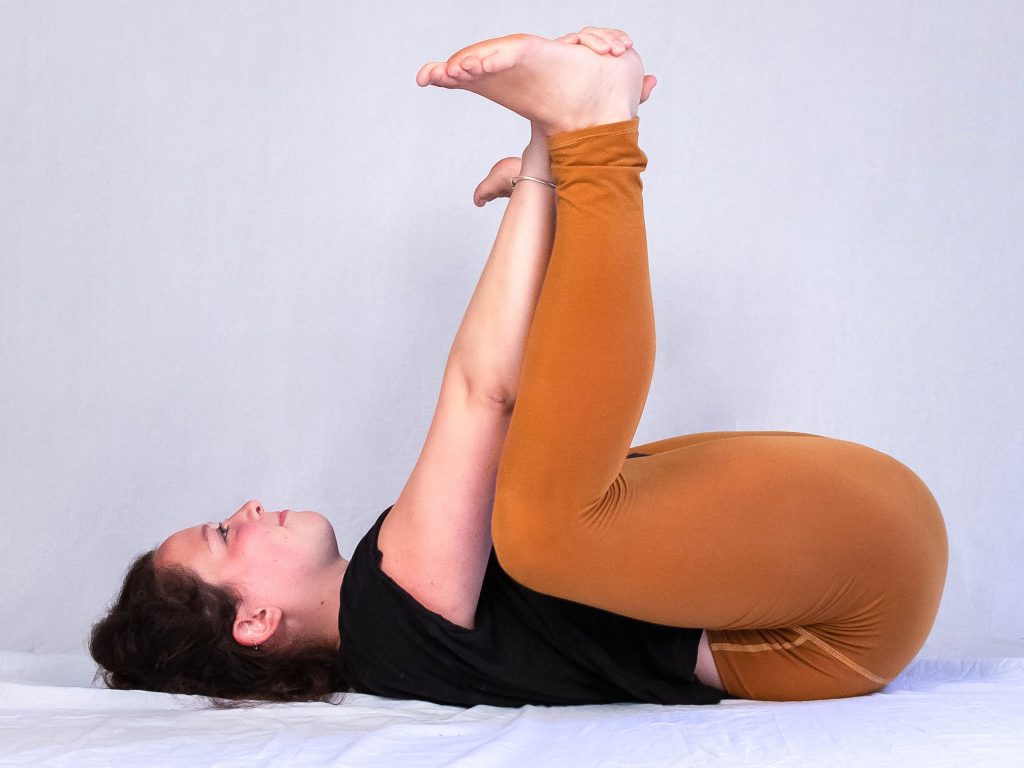
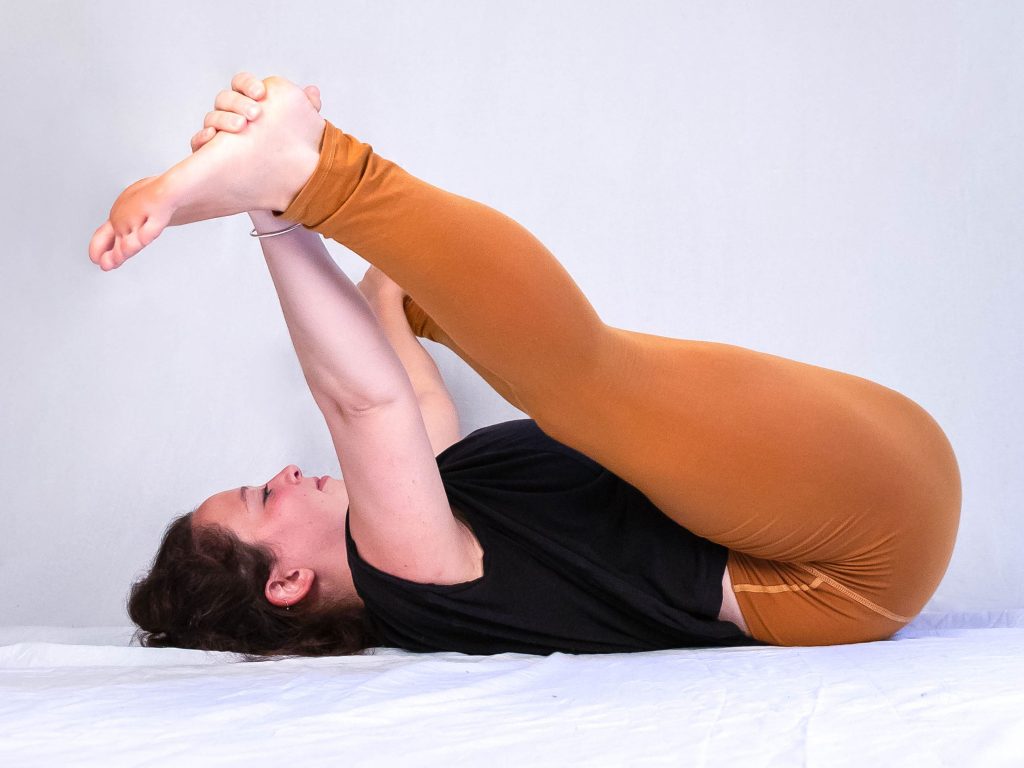
The spleen meridian runs through the medial hamstrings. This exercise helps unlock your pelvis and indirectly improves shoulder positioning and posture. The spleen meridian exercise is happy baby with resistance.
To do happy baby with resistance:
- Lay down on your back and bring your knees to your chest
- Pull your knees toward your armpits and then lift your feet up toward the ceiling
- NOTE: Try to keep your hips grounded throughout the entire movement!
- Reach your hands up the inside of your leg and wrap your thumbs around your heels
- Resist with your heels as you use your hands to pull the legs open toward a V = you may only be able to go partway in the beginning
- Keep pulling your heels against the hands as you come back to the starting position
Repeat happy baby with resistance 8 to 12 times. If you feel any pain in the knees or hips, shorten your movement to prevent overstretching. Grow the movement organically as you repeat the exercise daily.
2. Stomach
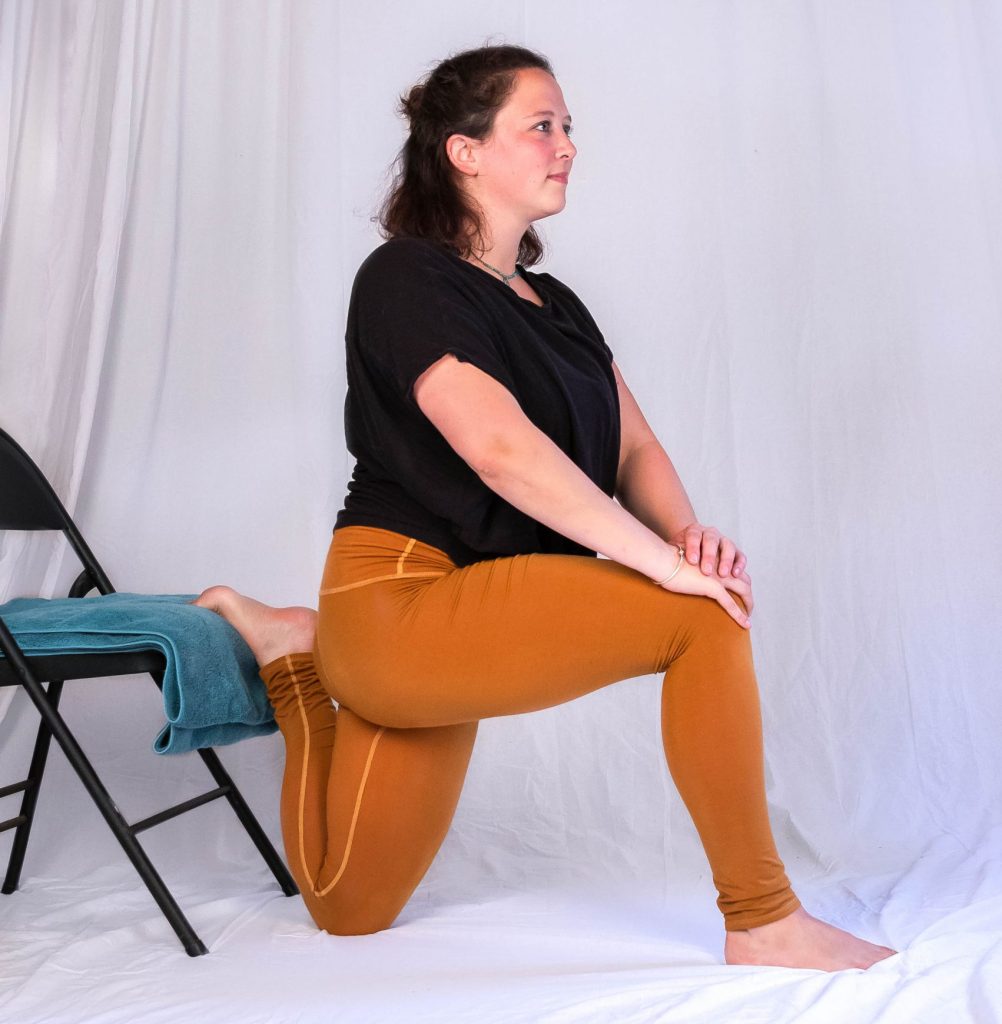
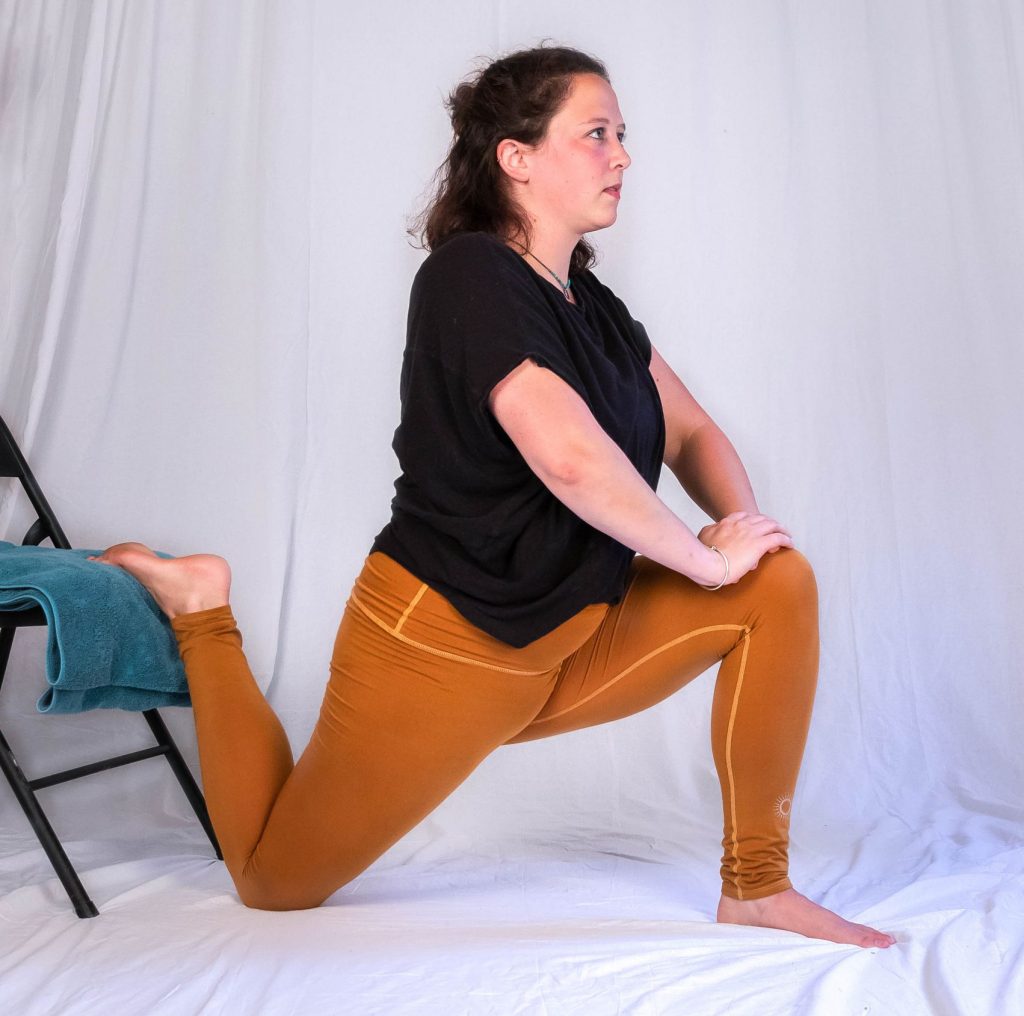
The stomach meridian runs through the lateral quadriceps. This is the balancing exercise to the spleen because the stomach muscle group runs directly opposite your medial hamstrings.
When you are in a seated position, the lateral quads are in a shortened position. So, lengthening the quads helps with overall posture and pelvis positioning. The stomach meridian exercise is a low lunge with resistance.
How to do a low lunge with resistance:
- Set up a space in front of a chair or couch with a pillow or blanket handy
- Get down into a low lunge and place your back foot up on the chair. Your front leg should start at 90 degrees (further forward than you might think!)
- NOTE: The closer your back knee is to the chair, the more flexibility you have. If you’re inflexible, your knee may be further away from the chair. Move your knee closer to the chair as you gain flexibility!
- Put your hands on your knee and start the resistance piece by pressing the top of your foot down into the chair (you might want a pillow on the chair if you have tight quads!)
- Begin to move backward and forward, but keep the back foot pressure on the chair at all times
Repeat the low lunge with resistance 8 to 12 times on each side. Stop your movement when you feel the quad start to disengage.
Lower Body Meridian Exercises
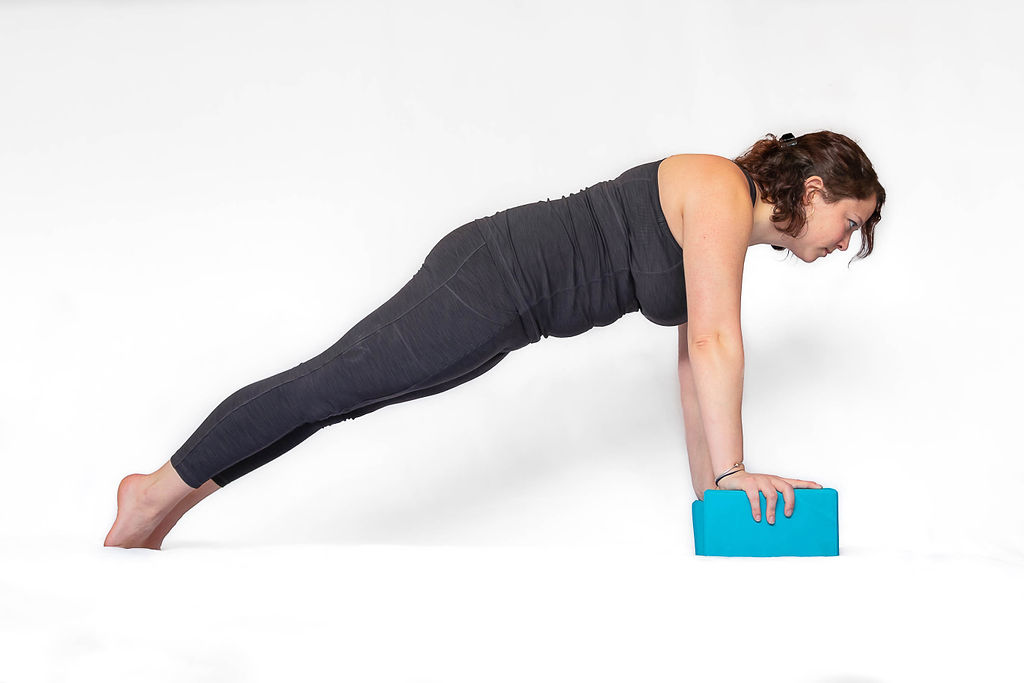

3. Lung
The lung meridian runs through the chest and arms. Often people with neck and shoulder pain have overly tight chest muscles because poor posture at your desk leads to overly contracted chest muscles. The lung meridian exercise – push-ups with blocks – helps stretch and strengthen your pecs, delts, and biceps.
How to do a push-up with blocks:
- Grab a yoga block and get your body into a standard push-up position with one hand on the block (you can put your knees down or keep them lifted)
- Lower down on a count of ten until your chest touches the floor then press up quickly
Repeat on both sides 8 to 12 times.
4. Large Intestine
The large intestine meridian runs through the muscles in your upper back and triceps. This exercise strengthens the upper back to help you stand up straight! It simultaneously builds muscle in the back and stretches the front of the body to bring you into pain-free alignment. Grapevine arms with resistance is the large intestine meridian exercise.
How to do grapevine arms with resistance:
- Start in a comfortable seat. Sit up tall with your chin slightly tucked.
- Wrap your arms around each other in grapevine arms with the right arm under the left
- NOTE: Press the hands against each other throughout the whole movement
- Begin with the elbows level with your chest and then lift the arms up, pressing the fingers toward the ceiling
- Come back down to chest level and repeat!
Repeat 8 to 12 times then switch arms (left arm under right). If you can’t fully intertwine the arms, come as close as you can. Or contact us if want suggestions for different exercises!
5. Heart
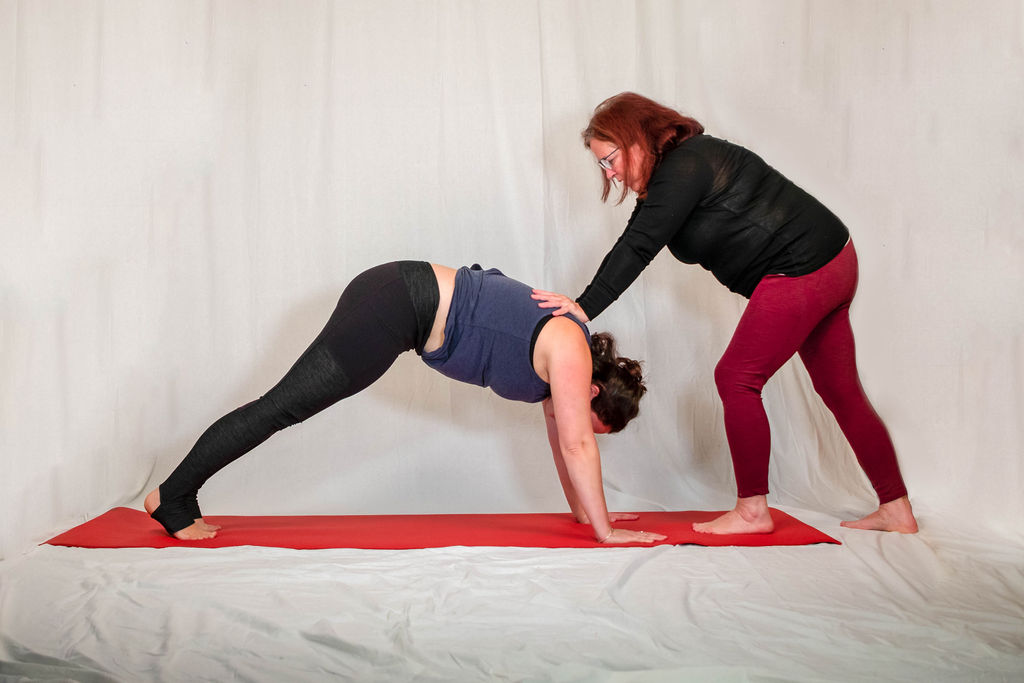
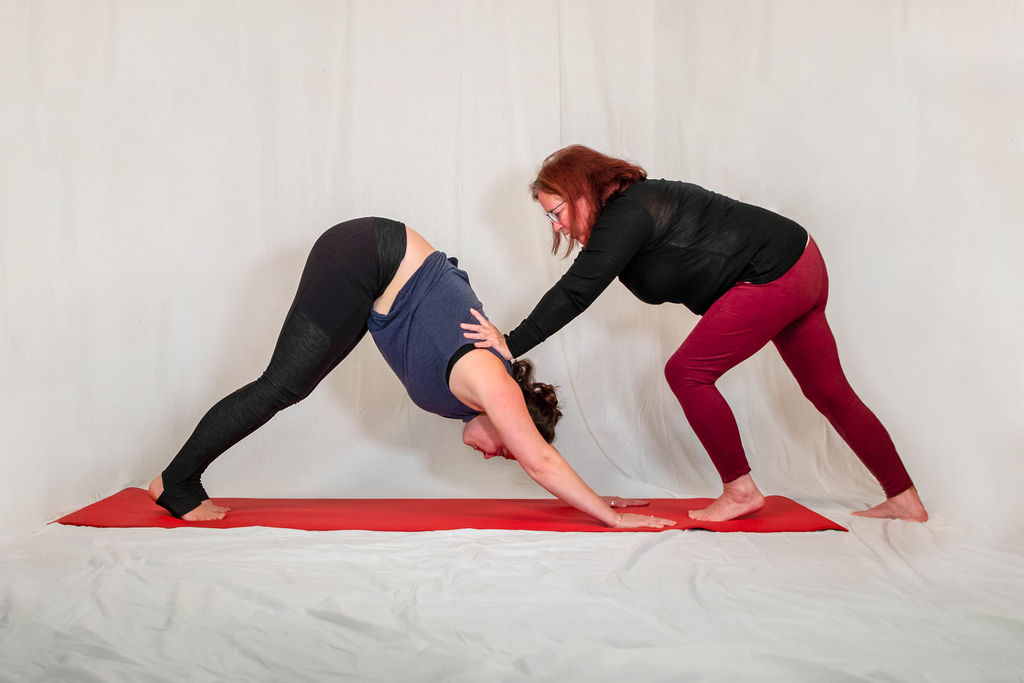
The heart meridian runs through the muscles in your biceps and chest. This meridian exercise opens the front of the body and strengthens the back muscles to help you hold the proper posture. The heart meridian exercise is downward dog on a chair (or the floor!) with resistance.
How to do downward dog on a chair with resistance:
- Position yourself in front of the chair and place your hands on the seat, line up your shoulders over your wrists
- Press the hands down into the chair and press back into downward facing dog
- Come forward once more and line up the shoulders over the wrists
Repeat 8 to 12 times. You can do this exercise without the chair on the floor if you have flexibility in your hamstrings and calves.
6. Small Intestine
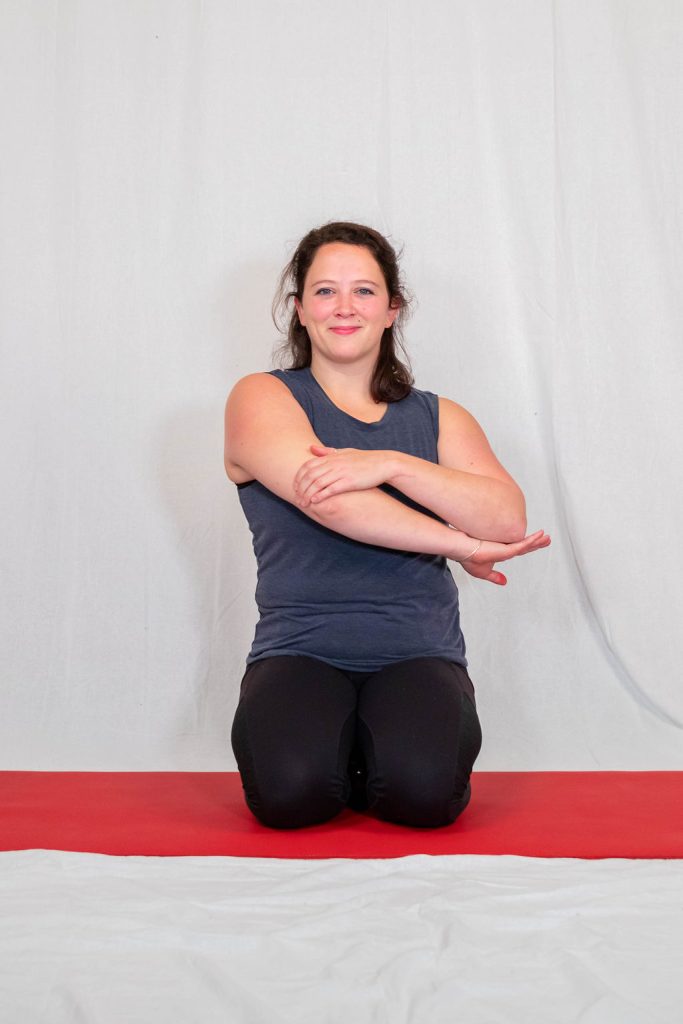
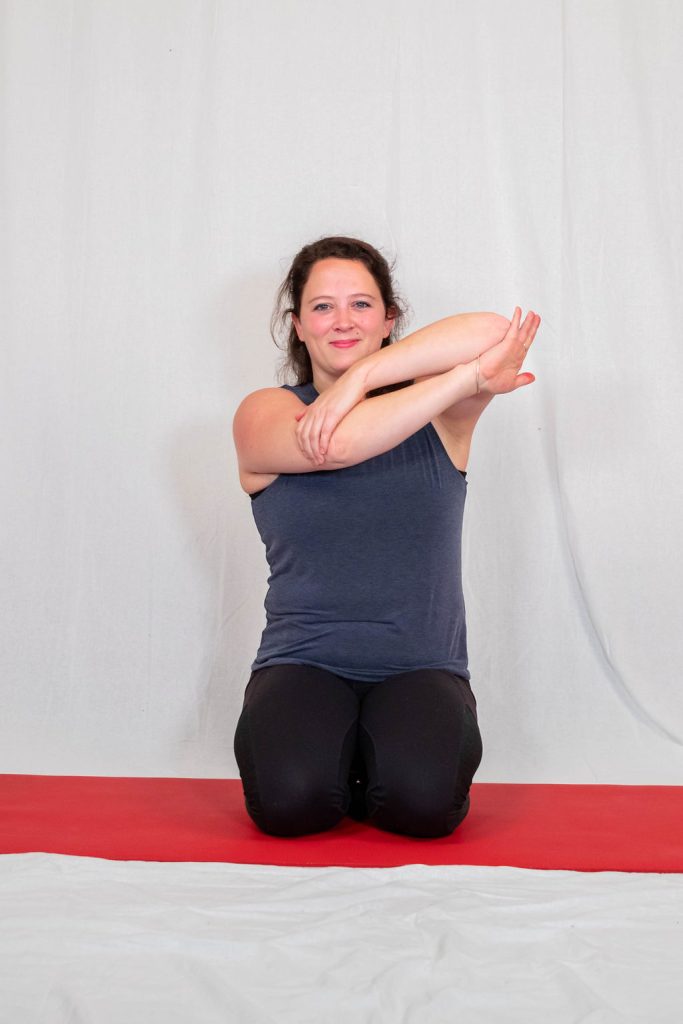
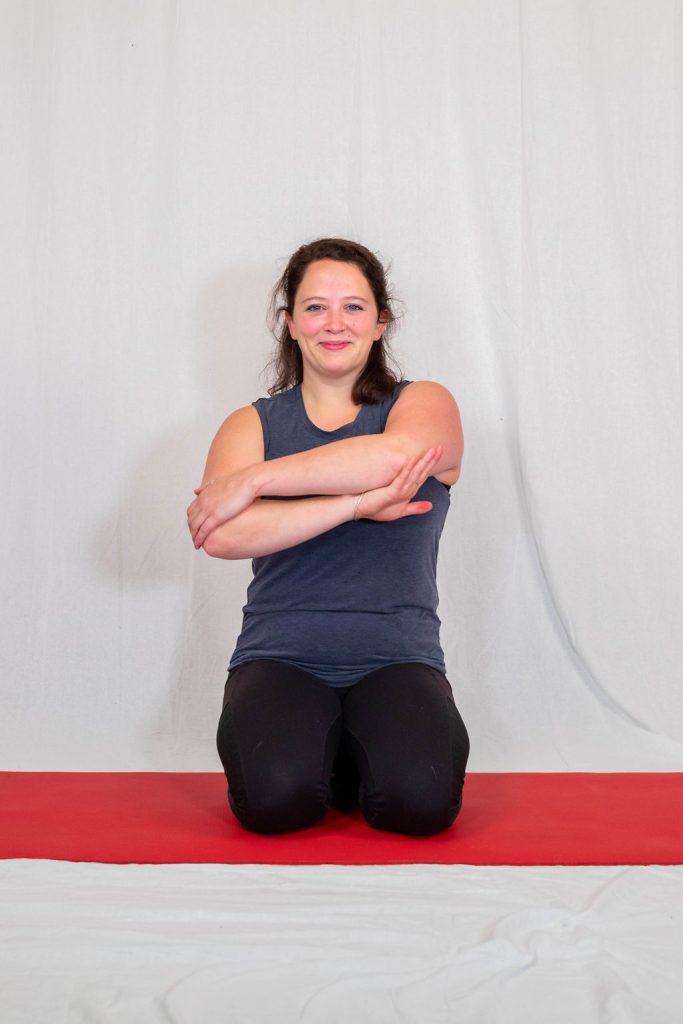
The small intestine meridian runs through the shoulders and back. This exercise helps create mobility in your shoulders by working the muscles in the rotator cuff. The meridian exercise for the small intestine is Infinity Arms.
How to do Infinity Arms:
- Start in a comfortable seat. Sit up tall with your chin slightly tucked.
- Reach your arms straight out to shoulder height then bend them 90 degrees.
- Rest the left arm on top of the right and wrap your fingers around your right elbow.
- Press your elbow against your hand and resist with your elbow.
- Start to draw a horizontal figure 8, leading with the right elbow
Repeat on both sides 8 to 12 times.
7. Pericardium
The pericardium meridian runs through the pecs and biceps. This exercise improves the strength and flexibility of your upper back and shoulders. The prayer behind your back meridian exercise improves your posture and opens the muscles of the chest.
How to do prayer behind the back:
- Stand up nice and tall with your chin slightly tucked
- Bring your hands together behind your back in a prayer position
- NOTE: You can have your fingers pointing up (more advanced) or down
- Press the hands together
- Pull the shoulder blades back and down, hold for three seconds, then release
Repeat 8 to 12 times.
8. Skin
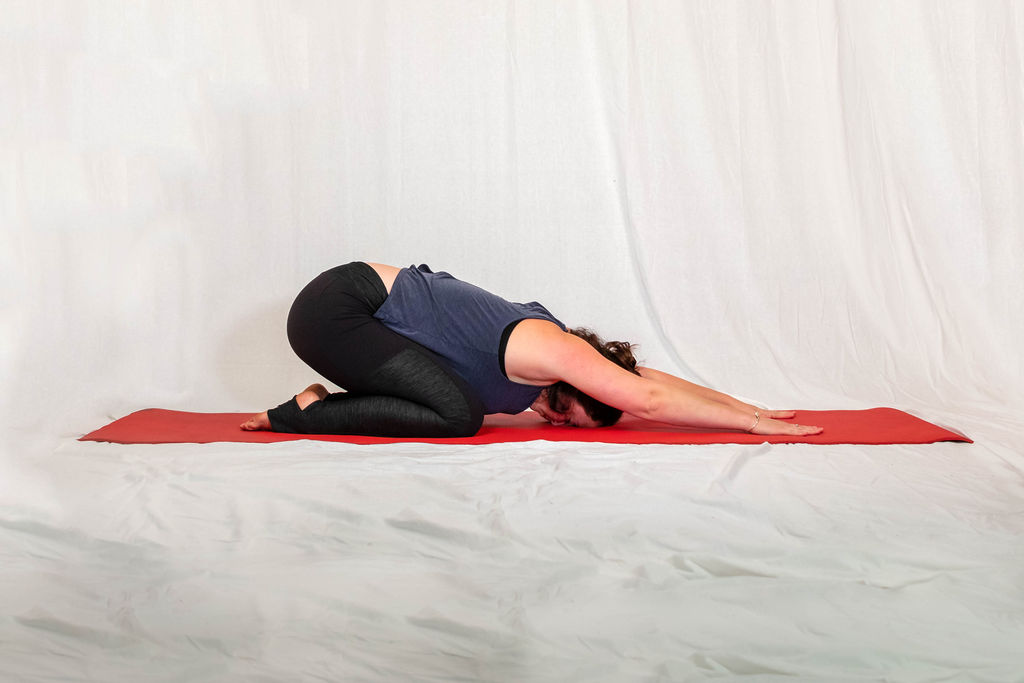
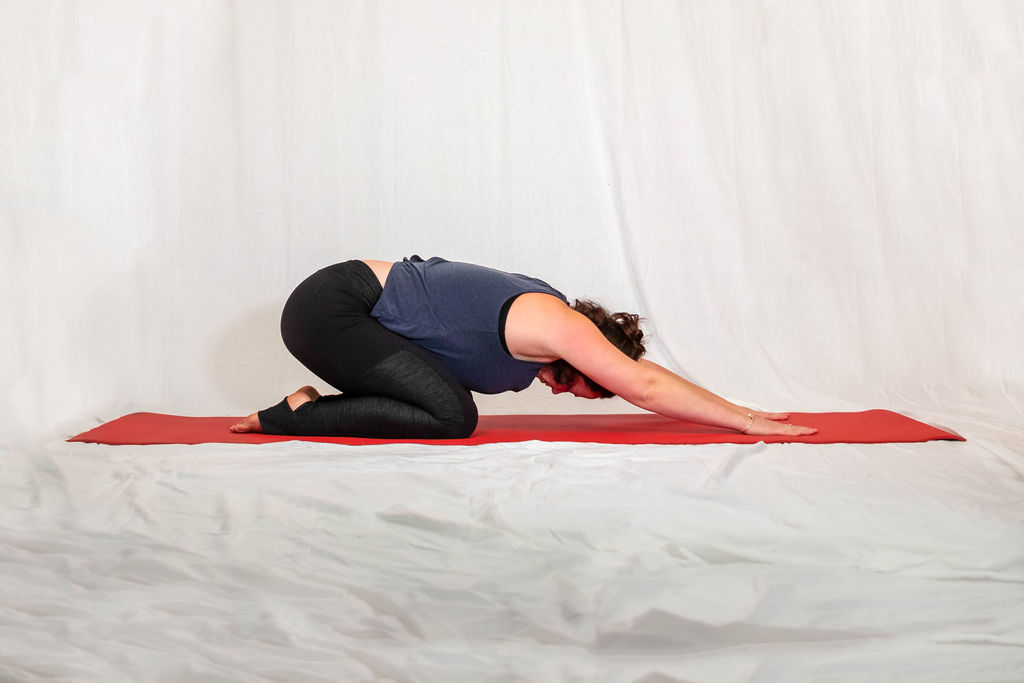
The skin meridian runs through the delts, traps, and triceps. It balances the pericardium meridian and strengthens the upper back, drawing the shoulders back and down. The exercise for the skin meridian is a child’s pose with resistance.
How to do a Child’s pose with resistance:
- Get into your child’s pose, knees together or knees wide to protect your lower back
- Reach your hands out in front of you and press your palms down onto the floor
- Inhale as you press your hands down, lift your head and chest off the floor, and look at your belly button
- Exhale and release your chest back down
Repeat 8 to 12 times. Imagine that someone is pressing down on your upper back as you lift your head and chest off the floor.
9. Appendix
The appendix meridian runs through the lats. Strength and flexibility in the lats is essential for shoulder flexibility and mobility. The exercise for the appendix meridian is free locust with resistance.
How to do free locust with resistance:
- Start lying face down on the floor with your arms by your sides
- Press your palms down into the floor either underneath your body or at your sides.
- Continue to press the palms down as you lift the legs off of the floor
- Hold for three seconds, lower your legs back down, and repeat
Repeat 8 to 12 times.
10. Thymus
The thymus meridian runs through the shoulders. It balances the appendix meridian and helps keep the shoulders lined up over the hips. The thymus meridian exercise is a cross-body pull with resistance.
How to do a cross-body pull with resistance:
- Start in a kneeling position, sitting on your heels
- Lift your right arm up over your head and then bend your elbow and let your hand fall down between the shoulder blades
- NOTE: Keep your upper arm close to your ear throughout the movement
- Reach your left hand to your right elbow
- Pull down with your left hand and resist with your right arm as you draw your elbow down in a diagonal towards your opposite knee.
Repeat 8 to 12 times and then switch sides.
What Does “with Resistance” Mean?
Resistance is a crucial part of strength and flexibility training at Infinity. When you resist the movement, you are consciously turning on the brain-muscle connections. This process prevents accidental overstretching and makes it possible to strengthen and stretch injured areas.
These exercises for neck and shoulder pain use resistance to simultaneously strengthen and stretch the muscles. Read more about resistance exercises here and here!
What You Get When You Work with Infinity
Infinity has self-stretch and assisted stretches for each meridian. A strength and flexibility session at Infinity includes a mix of assisted meridian exercises, massage techniques, and instructions for self-stretches to continue your training at home.
When you work with a trainer, you benefit from their expertise. They know the patterns of muscle imbalances in the body and work efficiently to bring your body back into balance. You should consider working with a trainer if you have an injury or lack of mobility in the neck and shoulders!
Want to Work with Infinity?
Infinity Flexibility has in-person and online offerings to bring balance to your body, mind, and spirit including flexibility and strength training, lymphatic drainage, and massage. Massachusetts locals can now schedule online for in-person appointments at our Natick, MA office!
We are also in the process of creating virtual offerings, including online consultations and a video library for self-stretching on YouTube. Sign up for our newsletter to be among the first to know when new products and services become available.
By submitting this form, you are consenting to receive marketing emails from: Infinity Flexibility. You can revoke your consent to receive emails at any time by using the SafeUnsubscribe® link, found at the bottom of every email. Emails are serviced by Constant Contact
Janet Matthies
Related posts
Categories
- Flexibility & Strength (13)
- Healing for Meridians (10)
- Holistic Lifestyle (5)
- Lymphatic Drainage (7)
- Massage (4)
- Meridian Archetypes (19)
- Spiritual (1)
- Traditional Chinese Medicine (12)

